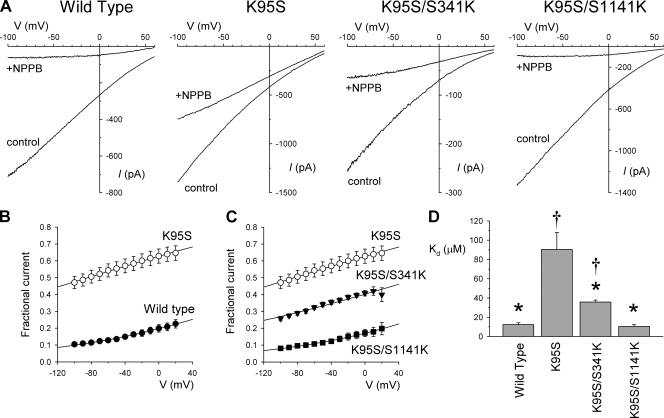Figure 1.
Block by NPPB depends on the presence of a positive charge in the pore. (A) Example leak-subtracted macroscopic I-V relationships for the different CFTR variants named using a low extracellular Cl− concentration (4 mM) after maximal channel activation with 5–10 nM PKA, 1 mM ATP, and 2 mM PPi. In each case, currents were recorded before (control) and after the addition of 50 µM NPPB to the intracellular (bath) solution. (B and C) Mean fractional current remaining after the addition of NPPB as a function of voltage. •, wild type (B); ○, K95S (B and C); ▾, K95S/S341K (C); ■, K95S/S1141K (C). Each set of data has been fit by Eq. 1, giving for wild-type: Kd(0) = 12.3 ± 0.1 µM and zδ = −0.20 ± 0.01; for K95S: Kd(0) = 83.9 ± 0.6 µM and zδ = −0.16 ± 0.00; for K95S/S341K: Kd(0) = 33.7 ± 0.7 µM and zδ = −0.15 ± 0.01; and for K95S/S1141K: Kd(0) = 10.3 ± 0.1 µM and zδ = −0.22 ± 0.01. (D) Mean Kd(0) values obtained from similar analysis of data from individual patches. Asterisks indicate a significant difference from K95S, and daggers indicate a significant difference from wild type (P < 0.05 in both cases). Mean of data from four patches in B–D.

